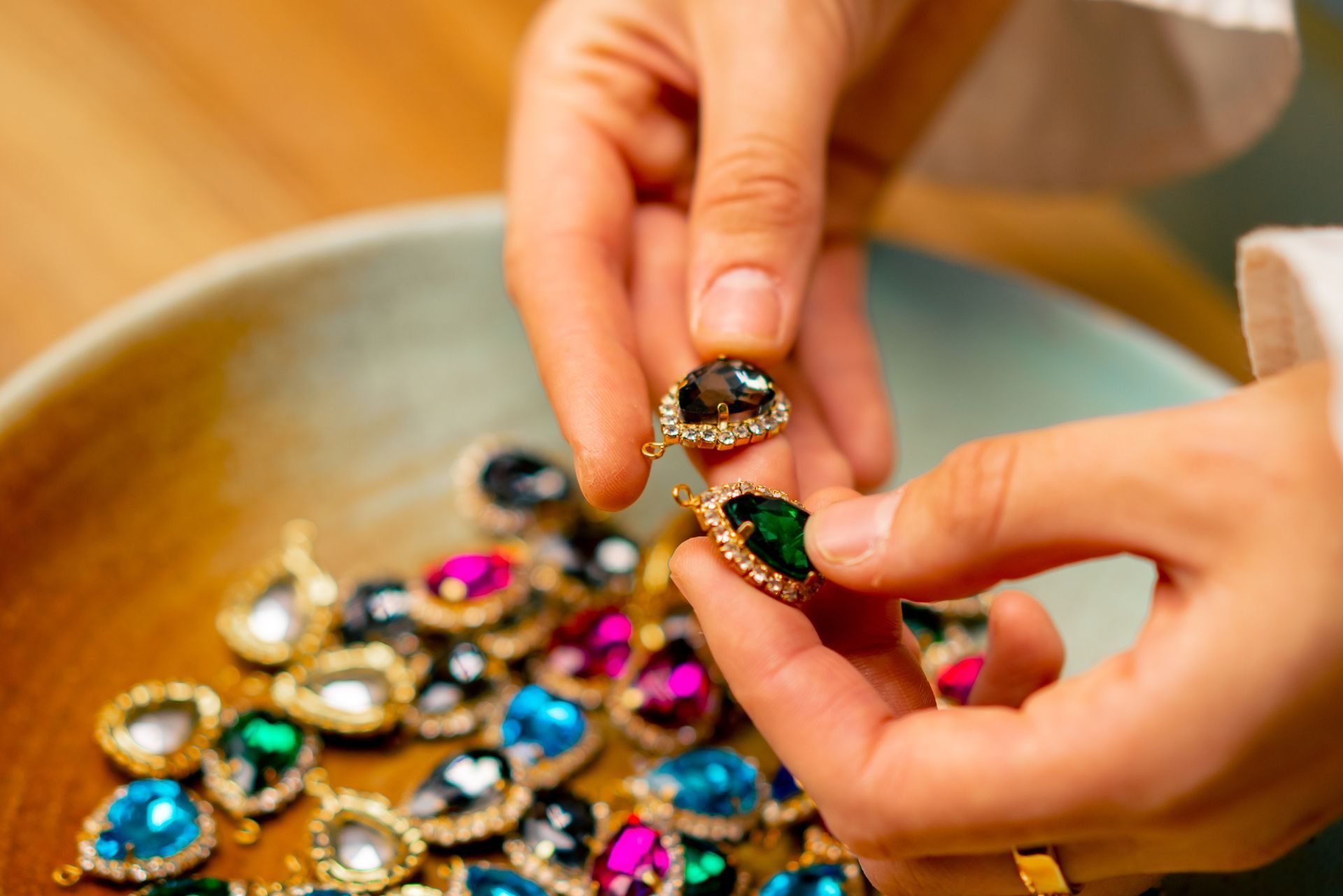Top 3 Recommended Policies

Jewelry is not just an accessory; it often holds significant emotional and financial value. Whether it’s an engagement ring, a family heirloom, or a luxury watch, protecting these items is crucial. In New York, jewelry insurance is a vital consideration for anyone who owns valuable pieces. This article explores everything you need to know about jewelry insurance in New York, from understanding its importance to finding the right coverage.
Understanding Jewelry Insurance
Jewelry insurance is a specialized form of coverage designed to protect valuable pieces from loss, theft, damage, or destruction. Unlike standard homeowners or renters insurance, which may offer limited coverage for jewelry, dedicated jewelry insurance provides a more comprehensive solution.
Why Is Jewelry Insurance Important?
Jewelry is often one of the most valuable possessions a person owns. Its value can be both monetary and sentimental, making it essential to protect these items adequately. In New York, where the risk of theft and loss can be higher due to urban living, having jewelry insurance becomes even more critical.
Without proper insurance, replacing a lost or damaged piece can be financially devastating. Jewelry insurance ensures that in the event of a mishap, the owner can recover their investment and maintain peace of mind. Additionally, the emotional toll of losing a cherished piece can be significant, especially if it holds personal memories or has been passed down through generations. Knowing that you have a safety net in place allows you to enjoy your jewelry without the constant worry of potential loss.
What Does Jewelry Insurance Cover?
Jewelry insurance typically covers a range of incidents, including:
- Theft: If your jewelry is stolen, the insurance can help you replace it.
- Loss: Accidental loss, such as misplacing a ring, can be covered depending on the policy.
- Damage: If your jewelry is damaged due to an accident, repairs or replacements can be covered.
It's important to read the policy details carefully, as coverage can vary significantly between providers. Some policies may also offer additional benefits, such as coverage for mysterious disappearance or even loss during travel. For instance, if you're on vacation and your necklace slips off during a swim, certain policies may cover the loss, allowing you to replace it without incurring a significant financial burden. Moreover, some insurers provide the option to insure jewelry for its appraised value rather than its market value, which can be beneficial in ensuring that you receive adequate compensation in the event of a claim.
Furthermore, many jewelry insurance policies allow for the inclusion of coverage for newly acquired pieces, meaning you can add items to your policy as your collection grows. This flexibility is particularly advantageous for those who frequently purchase new jewelry or receive gifts. Regular appraisals are also recommended to ensure that your coverage reflects the current market value of your pieces, as prices can fluctuate over time. By staying proactive about your jewelry insurance, you can safeguard not only your investment but also the stories and emotions that each piece represents.

Types of Jewelry Insurance Policies
In New York, there are generally two types of jewelry insurance policies: scheduled and blanket policies. Understanding the differences between these options can help you make an informed decision about your coverage.
Scheduled Jewelry Insurance
Scheduled jewelry insurance involves listing each piece of jewelry individually on the policy. This method allows for specific coverage amounts for each item, which can be beneficial for high-value pieces. Insurers often require an appraisal to determine the value of each item, ensuring that the coverage reflects its true worth.
Scheduled policies are ideal for those with several high-value items, as they provide tailored protection. However, they may require more effort to maintain, as any new purchases will need to be appraised and added to the policy. This process not only ensures that your coverage remains adequate but also helps you keep track of your collection's value over time. Additionally, many insurers offer the option to update your policy annually, allowing you to adjust coverage limits in line with market fluctuations and personal acquisitions.
Blanket Jewelry Insurance
Blanket jewelry insurance, on the other hand, provides a lump sum coverage limit for all jewelry owned. This type of policy is more flexible, as it does not require individual appraisals for each item. Instead, the total value of all jewelry is covered under a single limit.
This option is suitable for individuals who may not have high-value pieces but still want comprehensive coverage without the hassle of appraisals. However, it may not provide adequate protection for very expensive items, as the blanket limit could be insufficient. Moreover, blanket policies can be particularly advantageous for those who frequently acquire new pieces or who possess a diverse collection, as they eliminate the need for constant updates. It's essential to evaluate your jewelry collection regularly to ensure that the blanket limit remains appropriate, especially if you anticipate significant changes in your collection or if the market value of your items increases.
How to Choose the Right Jewelry Insurance Provider
Selecting the right insurance provider is crucial for ensuring adequate coverage and support when needed. Here are some key factors to consider when choosing a jewelry insurance provider in New York.
Reputation and Reviews
Researching the reputation of potential insurance providers is essential. Look for companies that specialize in jewelry insurance and have a strong track record. Online reviews and testimonials can provide insights into customer experiences, helping you gauge the reliability of the insurer.
Additionally, consider seeking recommendations from friends, family, or jewelers who may have experience with specific insurance companies. A well-regarded provider will often have a history of prompt claims processing and excellent customer service. It’s also beneficial to check if the provider is accredited by organizations such as the Better Business Bureau (BBB), as this can further validate their credibility and commitment to customer satisfaction.
Coverage Options and Limits
When evaluating insurance providers, examine the coverage options they offer. Ensure that the policy includes protection against theft, loss, and damage. Additionally, check the policy limits to confirm they align with the value of your jewelry collection.
Some insurers may offer additional features, such as worldwide coverage or coverage for loss during travel, which can be beneficial for frequent travelers. Understanding the nuances of each policy will help you find the best fit for your needs. Furthermore, consider whether the provider allows for periodic appraisals to adjust coverage limits as your jewelry collection appreciates in value over time, ensuring that you are always adequately protected.
Claims Process
The claims process is a critical aspect of any insurance policy. Before committing to a provider, inquire about their claims process and how they handle claims for jewelry. A straightforward and efficient claims process can make a significant difference when you need to file a claim.
Ask about the required documentation, the timeline for claims processing, and any potential deductibles. A provider with a transparent and user-friendly claims process can provide peace of mind, knowing that support is readily available when needed. Additionally, it may be advantageous to find out if the insurer offers a dedicated claims representative or a 24/7 claims hotline, which can enhance your experience during stressful situations. Understanding these details upfront can help you feel more secure in your choice of insurance provider, knowing that assistance is just a call away in times of need.
Cost of Jewelry Insurance in New York
The cost of jewelry insurance can vary widely based on several factors, including the value of the jewelry, the type of coverage, and the insurer's policies. Understanding these factors can help you budget for jewelry insurance effectively.
Factors Influencing Cost
Several key factors influence the cost of jewelry insurance:
- Value of Jewelry: Higher-value pieces will generally incur higher premiums.
- Type of Coverage: Scheduled policies may be more expensive due to the detailed appraisals required, while blanket policies might offer lower premiums.
- Location: Living in urban areas like New York City may impact rates due to higher risks of theft and loss.
Average Premiums
On average, jewelry insurance premiums in New York can range from 1% to 2% of the total value of the jewelry. For example, if you have a collection valued at $10,000, you might expect to pay between $100 and $200 annually for coverage.
However, these figures can vary based on the insurer and the specific terms of the policy. It’s advisable to obtain quotes from multiple providers to compare costs and coverage options.
Additionally, the age and condition of the jewelry can also play a role in determining premiums. Vintage or antique pieces may require special considerations, as their value can fluctuate based on market demand and historical significance. Furthermore, some insurers may offer discounts for jewelry that is stored in a safe or secured location, reflecting a lower risk of theft. This means that taking proactive steps to protect your jewelry can not only provide peace of mind but also potentially reduce your insurance costs.
Moreover, it’s important to consider the claims process when evaluating insurance options. Some insurers may have a reputation for being more accommodating and efficient when it comes to processing claims, which can be a crucial factor in your decision-making. Reading customer reviews and seeking recommendations can provide valuable insights into the reliability of different insurance providers, ensuring that you choose a company that will stand by you in the event of a loss.
How to Insure Your Jewelry
Insuring your jewelry is a straightforward process, but it requires careful planning and consideration. Here are the steps to take when insuring your jewelry in New York.
Get an Appraisal
The first step in insuring valuable jewelry is obtaining a professional appraisal. An appraisal provides an expert assessment of the item's value, which is crucial for determining coverage limits. Look for certified appraisers who are experienced in valuing jewelry.
Having an accurate appraisal ensures that your insurance policy reflects the true value of your jewelry, providing adequate protection in case of a claim. Moreover, an appraisal can also serve as a historical record of your jewelry, detailing its unique characteristics, materials, and craftsmanship. This information can be particularly helpful not only for insurance purposes but also for future resale or estate planning.
Choose the Right Policy
After obtaining an appraisal, the next step is to choose the right insurance policy. Consider your needs, the value of your jewelry, and the types of coverage available. Whether you opt for a scheduled or blanket policy, ensure that it meets your specific requirements.
Review the terms and conditions carefully, paying attention to exclusions and limitations. If you have questions, don’t hesitate to ask the insurer for clarification. Additionally, it may be beneficial to compare quotes from different insurance providers to ensure you are getting the best coverage for your investment. Some insurers may offer specialized jewelry insurance, which can provide more tailored coverage options, such as protection against loss, theft, or damage, that standard homeowners' policies might not fully cover.
Maintain Documentation
Once your jewelry is insured, it’s essential to maintain thorough documentation. Keep copies of appraisals, receipts, and photographs of your jewelry in a safe place. This documentation will be invaluable in the event of a claim.
Additionally, consider updating your policy as your jewelry collection changes. If you acquire new pieces or if the value of existing items increases, it’s crucial to adjust your coverage accordingly. Regularly revisiting your policy can help you stay informed about any changes in the market value of your jewelry, ensuring that you are not underinsured. Furthermore, some insurers may offer annual reviews or reassessments, which can be a great opportunity to discuss any new acquisitions or changes in your collection with your
insurance agent, ensuring that your coverage remains comprehensive and up-to-date.

Common Myths About Jewelry Insurance
Despite the importance of jewelry insurance, several myths and misconceptions can lead to misunderstandings. Clarifying these myths can help individuals make informed decisions about their coverage.
Myth 1: Homeowners Insurance Is Enough
Many people believe that their homeowners or renters insurance provides adequate coverage for jewelry. However, standard policies often have limitations on jewelry coverage, typically capping the amount at $1,000 to $2,000. For valuable pieces, this coverage may be insufficient.
Jewelry insurance offers more comprehensive protection tailored specifically to high-value items, making it a necessary consideration for jewelry owners. In fact, some policies can cover not only theft but also loss, damage, or even mysterious disappearance, which is particularly relevant for those who frequently wear their jewelry. Additionally, specialized jewelry insurance often includes coverage for loss during travel, which can be a significant concern for those who take their valuables on vacation.
Myth 2: Jewelry Insurance Is Too Expensive
While the cost of jewelry insurance can vary, many individuals find it to be a reasonable investment considering the potential loss of valuable pieces. Premiums typically range from 1% to 2% of the jewelry's value, which can be manageable compared to the cost of replacing lost or stolen items.
Moreover, the peace of mind that comes with knowing your jewelry is protected can outweigh the costs associated with insurance. Many insurers also offer discounts for bundling jewelry insurance with other types of coverage, which can further reduce expenses. Additionally, some policies allow for flexible payment options, making it easier for individuals to fit insurance premiums into their budgets without sacrificing coverage.
Myth 3: All Jewelry Insurance Policies Are the Same
Not all jewelry insurance policies are created equal. Coverage options, exclusions, and claims processes can vary significantly between providers. It’s essential to shop around and compare policies to find the one that best suits your needs.
Taking the time to research and understand the differences can lead to better protection for your valuable jewelry. For instance, some policies may require appraisals for high-value items, while others may not. Understanding the claims process is also crucial; some insurers have a reputation for being more responsive and easier to work with than others. Reading customer reviews and seeking recommendations can provide valuable insights into which providers offer the best service and coverage options, ensuring that you make a well-informed choice for your jewelry insurance needs.
Conclusion
Jewelry insurance is an essential consideration for anyone who owns valuable pieces, particularly in a bustling city like New York. Understanding the importance of jewelry insurance, the types of policies available, and how to choose the right provider can help ensure that your cherished items are adequately protected.
By taking proactive steps to insure your jewelry, you can enjoy peace of mind knowing that you are prepared for any unexpected events. Whether you opt for scheduled or blanket coverage, the right insurance policy will safeguard your investment and provide support when you need it most.
In a world where the unexpected can happen, protecting your jewelry is not just a luxury; it’s a necessity. With the right knowledge and preparation, you can navigate the complexities of jewelry insurance and ensure that your valuable pieces remain safe and secure.
Contact Us
Phone
Location

